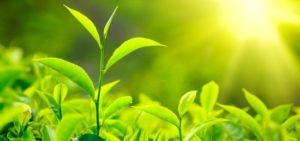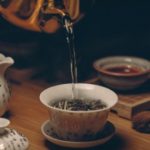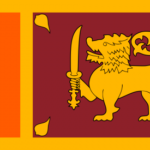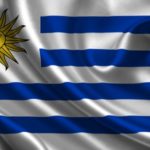Interesting facts about tea
 Tea is perhaps the most popular drink in the world, it is drunk in dozens of different countries, and in the world there are many different kinds of tea, quite different from each other. And, believe me, there is a huge, huge difference between tea from a bag and some sort of carefully cultivated for several hundred years already.
Tea is perhaps the most popular drink in the world, it is drunk in dozens of different countries, and in the world there are many different kinds of tea, quite different from each other. And, believe me, there is a huge, huge difference between tea from a bag and some sort of carefully cultivated for several hundred years already.
Initially, tea was used as a medicine in Chinese medicine.
There are several legends about the appearance of tea. Tradition says that almost 3 thousand years before the Chinese hero Shen-nun traveled all the world with a boiler in search of medicinal herbs and plants. Once in his broth, tea leaves were accidentally found, and the drink turned out so invigorating that the Chinese hero never again drank anything else.
According to another myth, the famous Buddhist preacher fell asleep during meditation. Awakened from drowsiness, he was so unhappy with himself that he tore out his eyelashes (according to another version – completely cut off his eyelids) and threw them to the ground. A day later, small plants appeared on this place, whose leaves, when brewed, had an amazingly toning effect.
The word “tea” in all the languages of the world has Chinese roots. In the south of China the drink is called “cha”, in the north – “te”, therefore, depending on how the Chinese tea was imported to this or that part of the world (by land or sea), it was named in foreign languages: Russian “tea” “Or, for example, English tea.
At first the Chinese cooked tea quite differently than our contemporaries do – the inhabitants of the country only after a few centuries of tea drinking stopped making it and adding salt to the drink.
The Japanese borrowed from the Chinese not only the love of tea, but all the rituals of the traditional tea ceremony, which became a real art.
The wars and political turmoil that persecuted China for several centuries almost completely destroyed the country’s tea tradition. Now it is gradually reviving, but little resembles the customs of the past.
Japanese nobility in the 14th and 15th centuries arranged “tea tournaments”, the participants of which were supposed to guess the grade and place from which tea was brought.
In Europe, one of the first admirers of tea was King Louis XIV, who learned that the Chinese with this drink protect themselves from disease. Tea helped the monarch cope with the gout, and then the decoction of tea leaves began to enthusiastically drink and his subjects.
At the British court fashion for tea was introduced by the Portuguese princess Catherine, who married an English monarch. The drink liked and its new subject, who for several years turned from coffee to tea in the tea.
The tradition of drinking tea at 5 o’clock in the evening appeared in Britain thanks to the Duchess Anna Russell, who invented a light snack between lunch and dinner for her friends.
In the 1980s, the Bakhmaro soda was extremely popular in the USSR on the basis of tea leaf extract.
In Russia, 98% of the population drinks tea, making the country the fourth most consumed in the world. More Russians like tea only Chinese, Indians and Turks.
Tea is an expensive product, because it is still collected and sorted by hand. All attempts to create a tea harvesting combine, including those undertaken in the USSR, failed: the collected sheets are mixed with stems, shoots and other debris. Tea machine assembly is used either to produce tea of the lowest category, or to extract from the sheets of caffeine used in cosmetology and pharmacology.
China is the only country in the world that produces not only green and black, but also yellow and white tea.



























